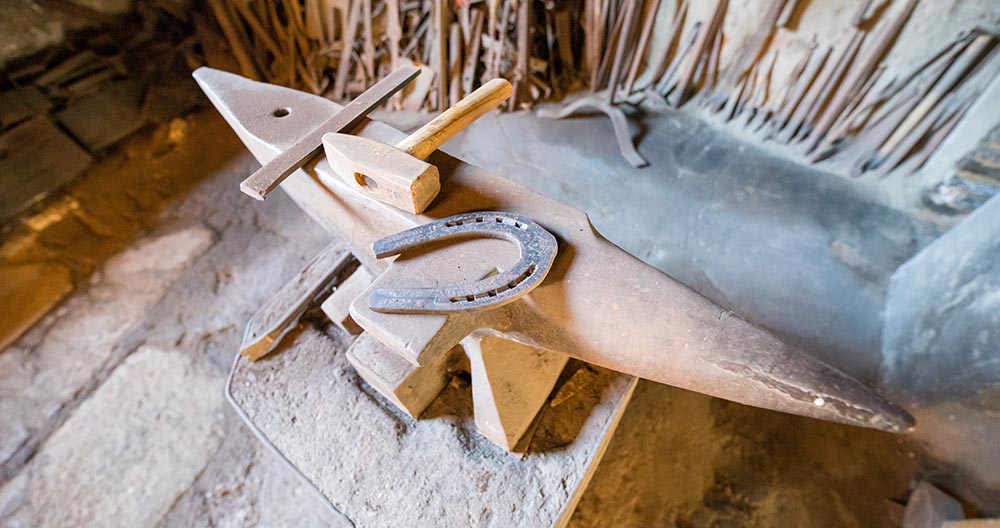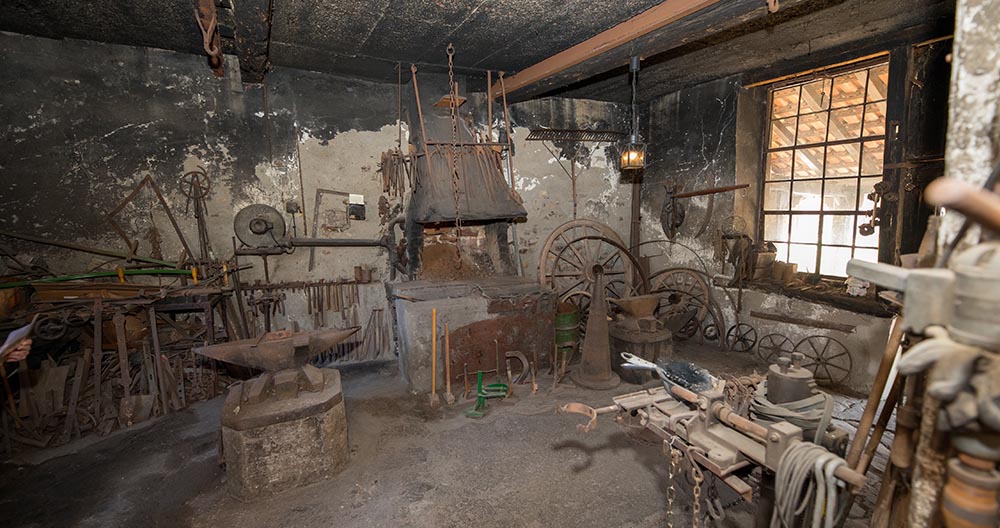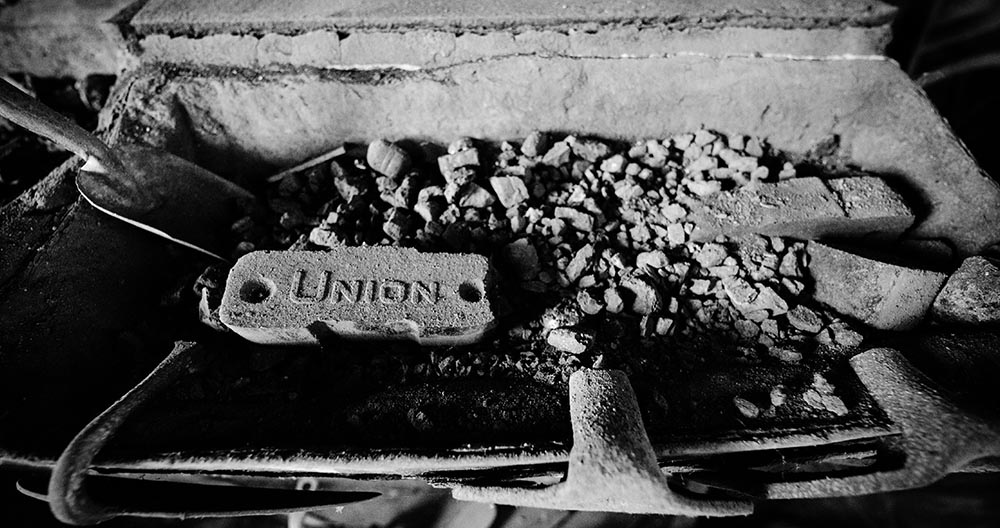



















Less than 50 years ago, it sounded just like that here at the forge on the Fronhof. The blacksmith’s hammer pounded, the fire crackled, the bellows fanned and the horses neighed.
Today one would probably complain about such a “noise” in the neighborhood, but back then in the old days you were glad that you had the blacksmith in the village. The Blacksmith was important, even vital! Especially for agriculture.
Who else would have forged the plows? Repaired tools, made the iron fittings for the wooden wheels of the wagons – and above all: who’d make the shoes for the horses that were irreplaceable in everyday life? Take a look under the forge’s porch-roof on the right: there is still the wooden frame into which the horses were tied for shoeing. The blacksmith also cared for the hooves and claws of other farm animals – oxen, cows, goats.
We in Nierstein are lucky that the old forge has been preserved to this day – and that in its original form! Inside the blacksmith’s shop it looks the same today as in the times when the forge was still active and used. Everything is still in its place, even the old tobacco pipe is right there, where the blacksmith Phillip Engel IV used to put it before he gave up the forge in 1975.
If you wanted to, you could start a forgefire and just restart the old smithy. And so the the Nierstein village forge, which was first mentioned in a document in 1727, is now one of the oldest in Rheinhessen. – And a precious reminder of the good old times of handcraft and hard manual work.





















Less than 50 years ago, it sounded just like that here at the forge on the Fronhof. The blacksmith’s hammer pounded, the fire crackled, the bellows fanned and the horses neighed.
Today one would probably complain about such a “noise” in the neighborhood, but back then in the old days you were glad that you had the blacksmith in the village. The Blacksmith was important, even vital! Especially for agriculture.
Who else would have forged the plows? Repaired tools, made the iron fittings for the wooden wheels of the wagons – and above all: who’d make the shoes for the horses that were irreplaceable in everyday life? Take a look under the forge’s porch-roof on the right: there is still the wooden frame into which the horses were tied for shoeing. The blacksmith also cared for the hooves and claws of other farm animals – oxen, cows, goats.
We in Nierstein are lucky that the old forge has been preserved to this day – and that in its original form! Inside the blacksmith’s shop it looks the same today as in the times when the forge was still active and used. Everything is still in its place, even the old tobacco pipe is right there, where the blacksmith Phillip Engel IV used to put it before he gave up the forge in 1975.
If you wanted to, you could start a forgefire and just restart the old smithy. And so the the Nierstein village forge, which was first mentioned in a document in 1727, is now one of the oldest in Rheinhessen. – And a precious reminder of the good old times of handcraft and hard manual work.


